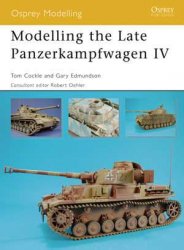Between the generation of Sjostrom and Stiller, who made their first films in 1912, and the generation who began work in the 1930s, only one Scandinavian director came to worldwide prominence. Dreyer's career prefigured that of the traveling "international" director of the postwar period, making films in Denmark, Sweden, Norway, Germany, and France, notably The Passion of Joan of Arc and Vampyr (p. 172). There followed a decade of inactivity, broken by some documentary shorts and Day of Wrath. After the Swedish Two People (1945), Dreyer made Ordet (The Word, 1954) and Gertrud (1964), both in Denmark. He died while planning a film on the life of Jesus.
Dreyer's earliest films revealed his fondness for static, highly pictorial compositions that alternate with intense

17.29 A conversation in Gertrud.
Theatrical tradition. During the second half of the nineteenth century, the Norwegian Henrik Ibsen and the Swede August Strindberg had made Scandinavian drama world famous. Both playwrights had a penchant for fantasy and expressionism, and their plays often used complex symbols to suggest characters’ emotional states. Strindberg had also developed an intimate psychological drama called the Kammerspiel, or “chamber play.” Typically, the Kammerspiel was set in a single room and staged in a small theater that would bring the audience close to the actors. (See pp. 109-110 for a discussion of the influence of Kammerspiel on silent German cinema.) Of the filmmakers marked by these modernist trends, the two most influential were Alf Sjoberg and Ingmar Bergman (for more on the latter, see Chapter 19).
Close-ups of actors' facial expressions. In Joan of Arc and Vampyr he also explored unusual camera movements— gymnastic rotations in the former, subtly misleading tracking movements in the latter. After Vampyr, Dreyer became convinced that the sound cinema required a more "theatrical" technique. His last four films, all adaptations of plays, are largely confined to interior settings and elaborate their action through lengthy dialogue exchanges. Using very long takes, Dreyer records dialogue in rigid, harmonious compositions (17.29). The camera arcs gracefully across parlors as characters slowly move from a sofa to a table, from a doorway to a bedside. "Camera movement," he wrote, "gives a fine soft rhythm."4 Dreyer's version of modernism acknowledges the film's source in a literary text and creates a "minimal" cinema of minutely varied pace, much more subdued than the aggressive theatricality of Visconti or Bergman.
Through this ascetic style, Dreyer presents the ineffable mystery of faith and love. In Day of Wrath, Anne goes to the stake acknowledging she is a witch, but we wonder whether the community has merely convinced her that she is guilty. Ordet ends with one of the most daring scenes in film history: a miracle created by a child's faith. In Gertrud, the woman who demands absolute devotion retreats into isolation, worshiping an ideal of pure love.
Dreyer's films were not popular successes, but his Single-minded tenacity within the commercial film industry and his rigorous exploration of powerful themes won him critical regard. His contributions to modernist technique influenced Jean-Luc Godard, Jean-Marie Straub, and other young directors.
After making one film in 1929, Sjoberg became the major director at Stockholm’s Royal Dramatic Theatre. He returned to filmmaking in 1939 and completed several films during the war. One of the most original was The Heavenly Play (1942), which fused the silent-film traditions of naturalistic landscape and symbolic drama
(17.30) to create an allegorical fantasy of Protestant redemption.
More influential outside Sweden was SjOberg's Torment (1944), scripted by Bergman. A high-school student tortured by his Latin teacher, nicknamed Caligula, discovers that the man is a lecher, a Nazi sympathizer, and a murderer. Tormenfs sympathy with teenage rebellion emerges not only from its rather schematic story but also from a visual style derived from German Ex-
17.30, left Chiaroscuro and Expressionist setting in Sjoberg’s The Heavenly Play.



17.31, right Torment: Sinister, endless flights of stairs in the school are similar to those found in the city streets.
17.32, left Caligula as Nosferatu, in Torment (compare with 5.16).
17.33, right Two time periods in one shot: Julie, sitting in the foreground, tells of an episode from her childhood; in the background her mother talks with her as a child.
Pressionism. Looming architecture and long, sharp shadows turn the entire city into a prison (17.31). The pudgy Caligula, with his round spectacles and fussy manner, becomes a wartime Caligari, and his shadow threatens the lovers in a gesture that echoes Murnau’s vampire in Nosferatu (17.32).
After the war, Sjoberg continued to move between theater and cinema. After staging Strindberg’s 1888 naturalist play Miss Julie, he adapted it to the screen in 1951. The film concentrates upon the performances, especially Anita BjOrk’s skittery Julie, but it also expands the original Kammerspiel. In Strindberg’s play, characters recount their memories in monologues. Sjoberg dramatizes the scenes as flashbacks that combine past and present in the same shot (17.33). Conventions of what would become art cinema can be found in Strindberg’s original Kammerspiel, but Sjoberg adds a modernist ambiguity derived from film’s power over space and time.




 World History
World History









